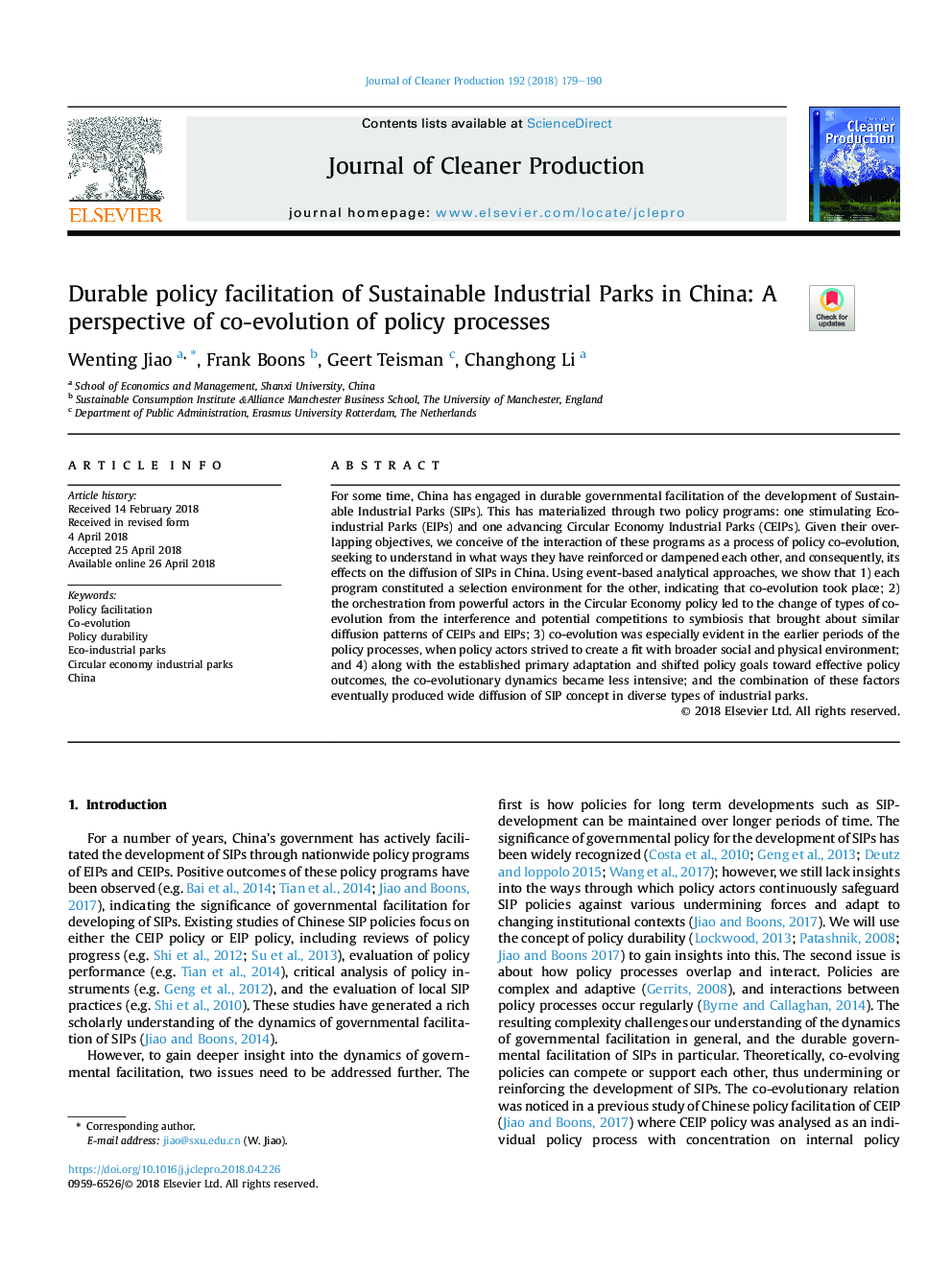| Article ID | Journal | Published Year | Pages | File Type |
|---|---|---|---|---|
| 8094489 | Journal of Cleaner Production | 2018 | 12 Pages |
Abstract
For some time, China has engaged in durable governmental facilitation of the development of Sustainable Industrial Parks (SIPs). This has materialized through two policy programs: one stimulating Eco-industrial Parks (EIPs) and one advancing Circular Economy Industrial Parks (CEIPs). Given their overlapping objectives, we conceive of the interaction of these programs as a process of policy co-evolution, seeking to understand in what ways they have reinforced or dampened each other, and consequently, its effects on the diffusion of SIPs in China. Using event-based analytical approaches, we show that 1) each program constituted a selection environment for the other, indicating that co-evolution took place; 2) the orchestration from powerful actors in the Circular Economy policy led to the change of types of co-evolution from the interference and potential competitions to symbiosis that brought about similar diffusion patterns of CEIPs and EIPs; 3) co-evolution was especially evident in the earlier periods of the policy processes, when policy actors strived to create a fit with broader social and physical environment; and 4) along with the established primary adaptation and shifted policy goals toward effective policy outcomes, the co-evolutionary dynamics became less intensive; and the combination of these factors eventually produced wide diffusion of SIP concept in diverse types of industrial parks.
Related Topics
Physical Sciences and Engineering
Energy
Renewable Energy, Sustainability and the Environment
Authors
Wenting Jiao, Frank Boons, Geert Teisman, Changhong Li,
